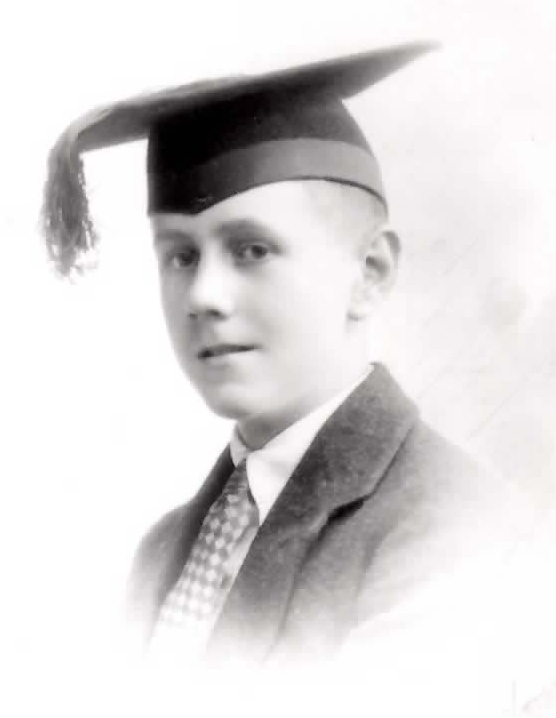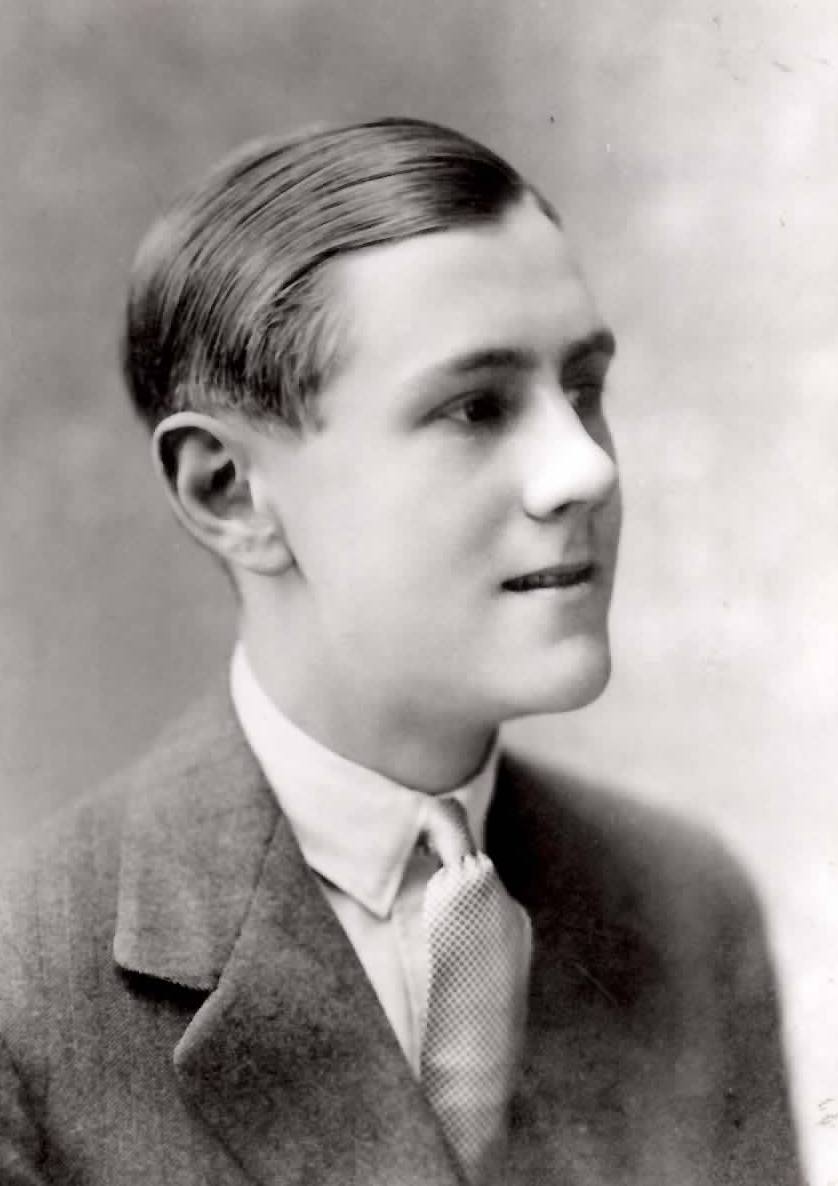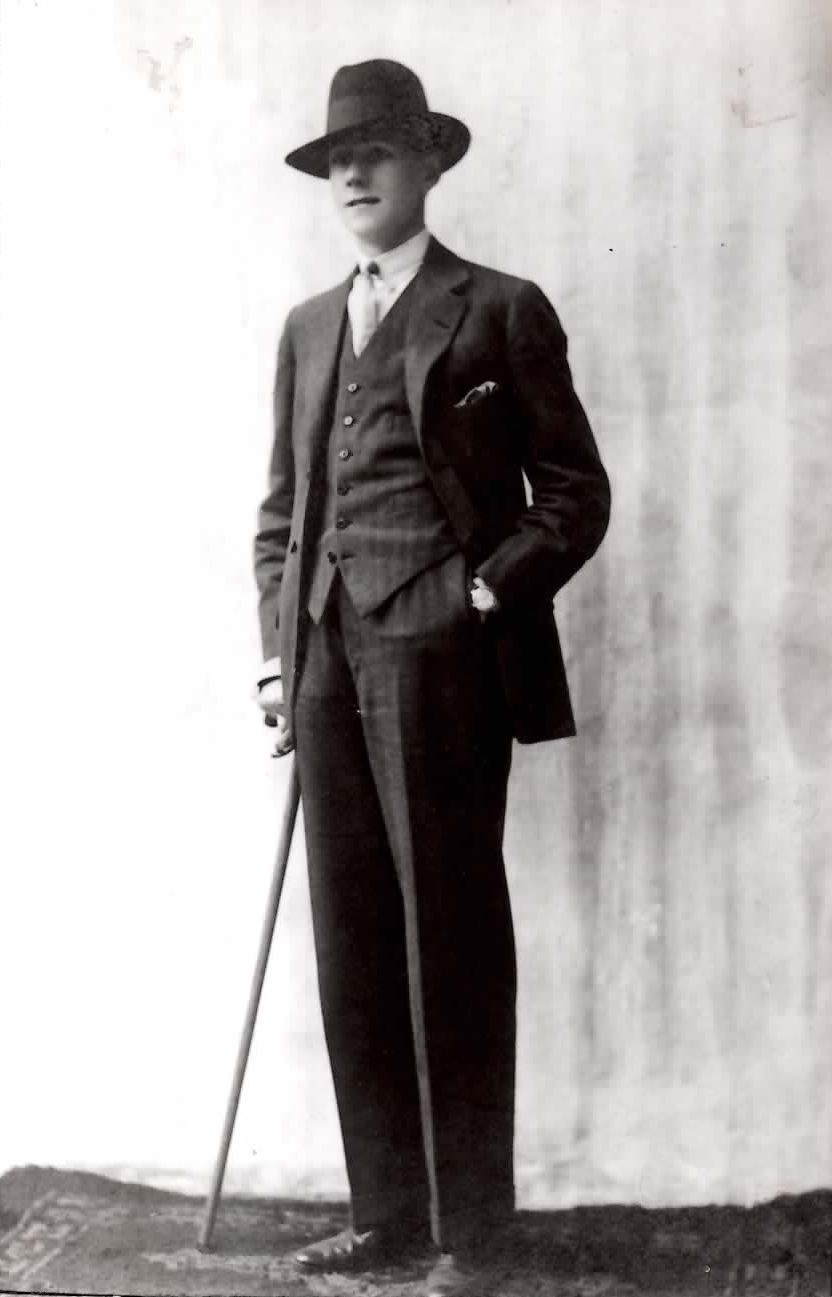Patrick White at Mt Wilson Exhibition
The Red Admiral – Patrick White at Mount Wilson
- Details
In 2012, the Mt Wilson and Mt Irvine Historical Society will celebrate the centenary of Patrick White’s 28 May 1912 birth date by holding a year-long exhibition at the Turkish Bath Museum at Mt Wilson.
Patrick White spent his formative years as a young child at Mt Wilson in the 1920s and 1930s; the exhibition will highlight the impact of both the Australian natural environment and the influence of working class and wealthy society individuals and families that were to strongly shape him for the remainder of his life, as an individual and as a writer of international acclaim.
The story of Patrick White and his family at Mt Wilson in the 1920s and 30s (the so-called 'Golden Age' of Hill Station life in Australia) is rich in historical interest, and yet, remains well hidden to most people.
The project aims to heighten awareness of the formative years of White's life in an easily accessible and understood manner. The exhibition has been specifically designed not to be an academic treatment of his literature, nor does it require an understanding or appreciation of White, or his works.
The goal is to foster a recognition of a vital influence on White that has previously been ignored, or misunderstood, for many years, despite the amount of research undertaken on the most famous and renowned Australian author.
The exhibition will be in the form of a series of framed A1 sized posters designed by a local professional graphics artist.
The title of the exhibition is taken from the name White used as a ten-year old. His first published pieces were about Mt. Wilson. The ‘Red Admiral’ was his favourite butterfly.
The exhibition was opened on 11.00am Sunday 17th June 2012 by the Governor of NSW, Professor Marie Bashir AC CVO at the Mt Wilson Village Hall.
The exhibition's posters and historical narrative can be viewed here.
The Red Admiral
- Details
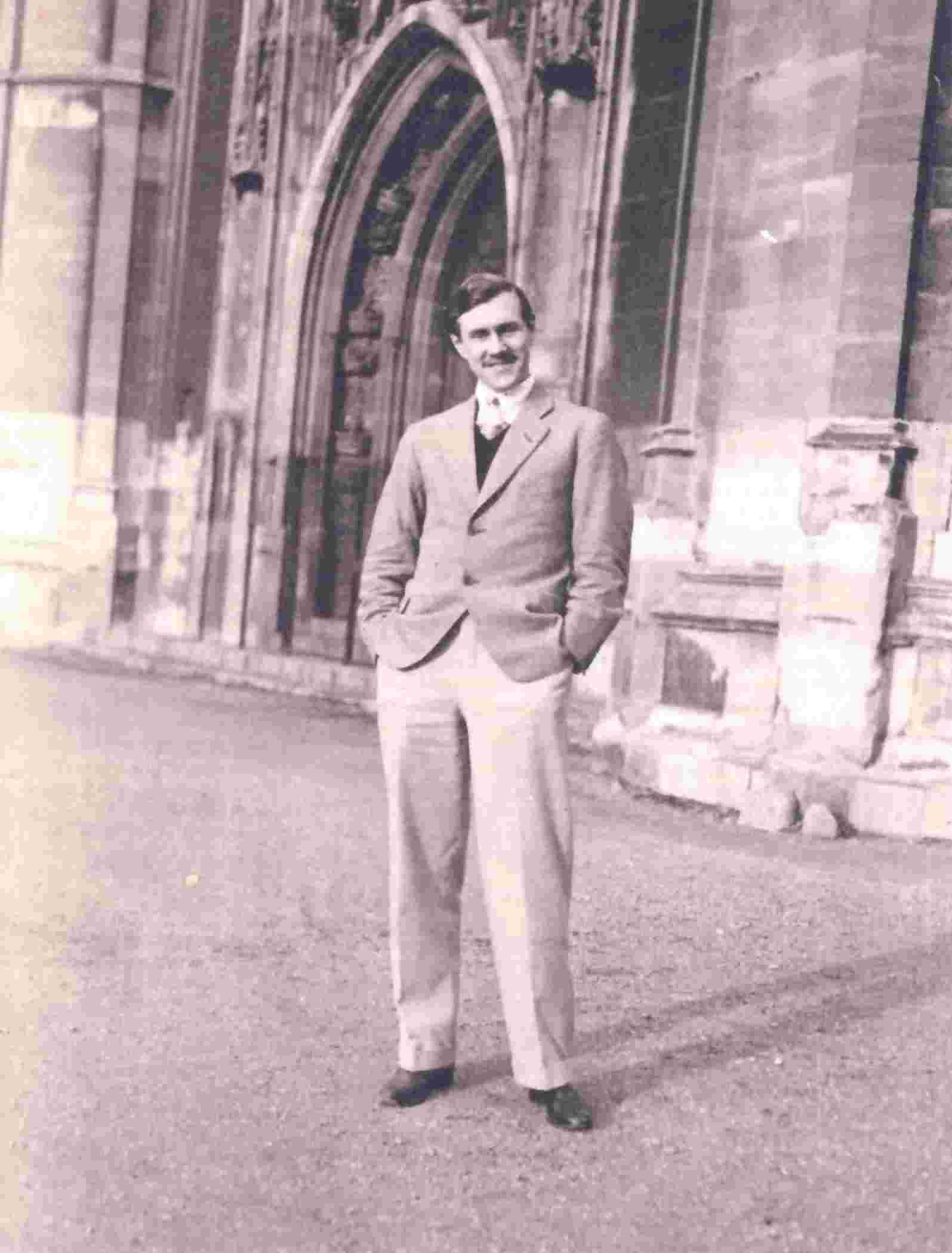
Patrick White at Cambridge circa 1932
Patrick White spent his formative years as a young child and adult at Mt Wilson in the 1920s and 1930s
[Mt Wilson] was the one place in Australia [I] dreamed of returning to one day
In 2012, the Mt Wilson and Mt Irvine Historical Society will celebrate the centenary of Patrick White's 28 May 1912 birth date by holding a year-long exhibition at the Turkish Bath Museum at Mt Wilson.
Patrick White spent his formative years as a young child at Mt Wilson in the 1920s and 1930s; the exhibition will highlight the impact of both the Australian natural environment and the influence of working class and wealthy society individuals and families that were to strongly shape him for the remainder of his life.
The story of Patrick White and his family at Mt Wilson in the 1920s and 30s (the so-called 'Golden Age' of Hill Station life in Australia) is rich in historical interest, and yet, remains well hidden to most people.
The project aims to heighten awareness of the formative years of White's life in an easily accessible and understood manner. The exhibition has been specifically designed not to be an academic treatment of his literature, nor does it require an understanding or appreciation of White, or his works.
The goal is to foster a recognition of a vital influence on White that has previously been ignored, or misunderstood, for many years, despite the amount of research undertaken on the most famous and renowned Australian author.
The title of the exhibition is taken from the name White used as a ten-year old. His first published pieces were about Mt. Wilson. The Red Admiral was his favourite butterfly.
The exhibition details the influence of Mt Wilson on Patrick White as an individual and a writer of international acclaim.
Additionally, a 25 minute film of White, and his relationship to Mt Wilson, has been produced and will be shown at the exhibition. The film features interviews with three Mt Wilson residents, Peter Valder, Mary Reynolds and Libby Raines, who all give a unique insight into White as a child.
Dr Bernadette Brennan and Dr Susan Lever, two respected academics from the University of Sydney and the Association for the Study of Australian Literature, and David Marr, White's biographer, are also interviewed in the film and explore Mt Wilson's influence on White's works.
In the film, the well-known Radio National journalist and producer, Rachael Kohn, conducts the interviews and White's first published pieces are read by Huw Evans. Both Rachael and Huw are long time residents of Mt Wilson.
A copy of the DVD can be requested by emailing This email address is being protected from spambots. You need JavaScript enabled to view it.
A donation to the Mt Wilson and Mt Irvine Historical Society to cover the costs of copying and mailing the DVD is suggested.
Wynnes, Whites and Withycombes
- Details
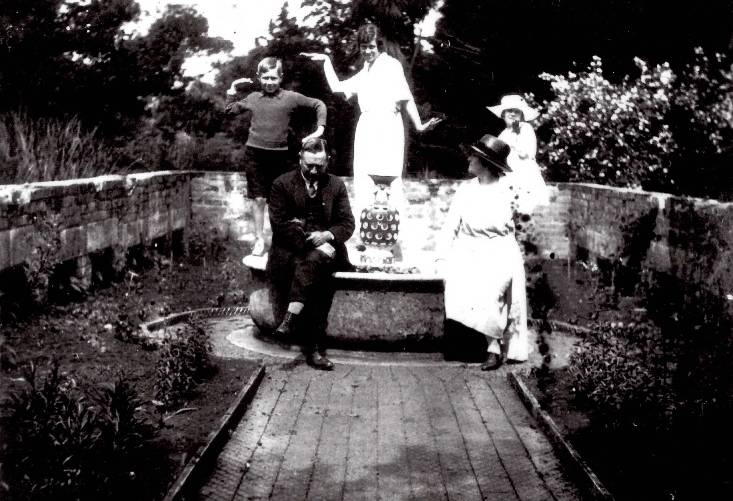
Three influential families, linked by marriage and social influence, had a profound impact on the development of Mount Wilson
The earliest images of Patrick White in Mt Wilson are to be found in an album belonging to Jane Smart (nee Wynne, 1923-1995). Jane and her husband Bill Smart were the owners of Wynstay at Mt Wilson until 1999. Wynstay, originally known as Yarrawa, belonged to Jane's great-grandfather Richard Wynne. Jane's father, Richard Owen Wynne, renamed the property Wynstay, when he and his wife, Mariamne, completed the present neo-Georgian colonial residence in 1923.
Henry John Wynne and Marian Cecile White married in 1891. Their two children, Richard Owen and Dulcie Marion, were cousins to Patrick White.
Henry John was born in 1859. Henry was a bright lad at school and an excellent horseman. He attended the Royal Agricultural College (Cirencester, England) winning prizes in Veterinary Science and Estate Management in 1880; he was a founding member of the Sydney Lancers.
Marian Cecile, born in 1865 at Bando Station, on the Liverpool Plains, was the daughter of Henry Charles White of Havilah, Mudgee, and Isabella Mary Lowe. Henry Charles was Victor White's uncle, and brother of James White who founded and created the White wealth through property and pastoral activities at Belltrees in the Hunter Valley.
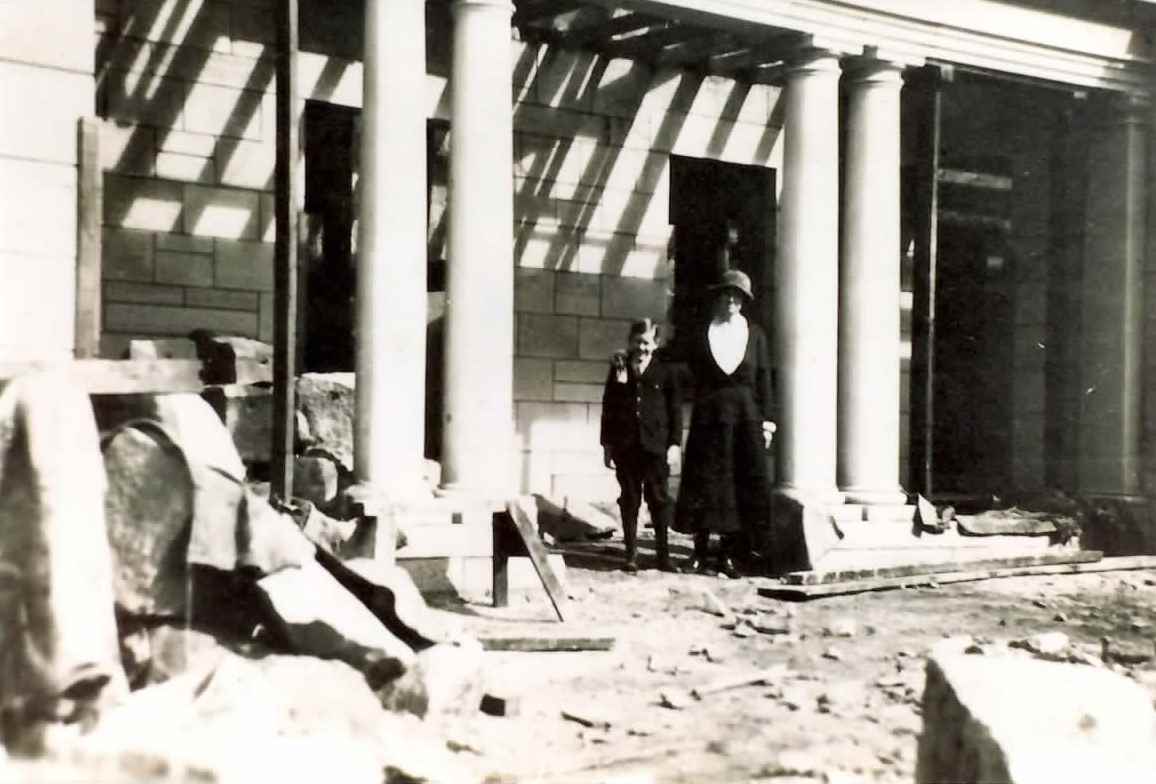
Patrick White's parents were distant cousins. In the Hunter Valley the Whites and Withycombes were neighbours. Ruth Withycombe's father, James, came to Australia in 1856, but died in England in 1899. Her mother, Winifred, was born into a prosperous family from the Hunter Valley in New South Wales. In 1910, Victor (Dick) White and Ruth married at St Philip's Church in Sydney.
In the social class system of the 1880s in NSW, the White family would have been seen as local aristocrats, being pastoralists and successful graziers. Richard Wynne, then owner of many acres in Mt Wilson - a recognised Hill Station - and a successful businessman, would likewise have been considered a member of the upper classes.Richard Owen inherited Yarrawa from his grandfather. He returned from England to live there after distinguishing himself as a Lieutenant Colonel DSO with the British army in World War I.
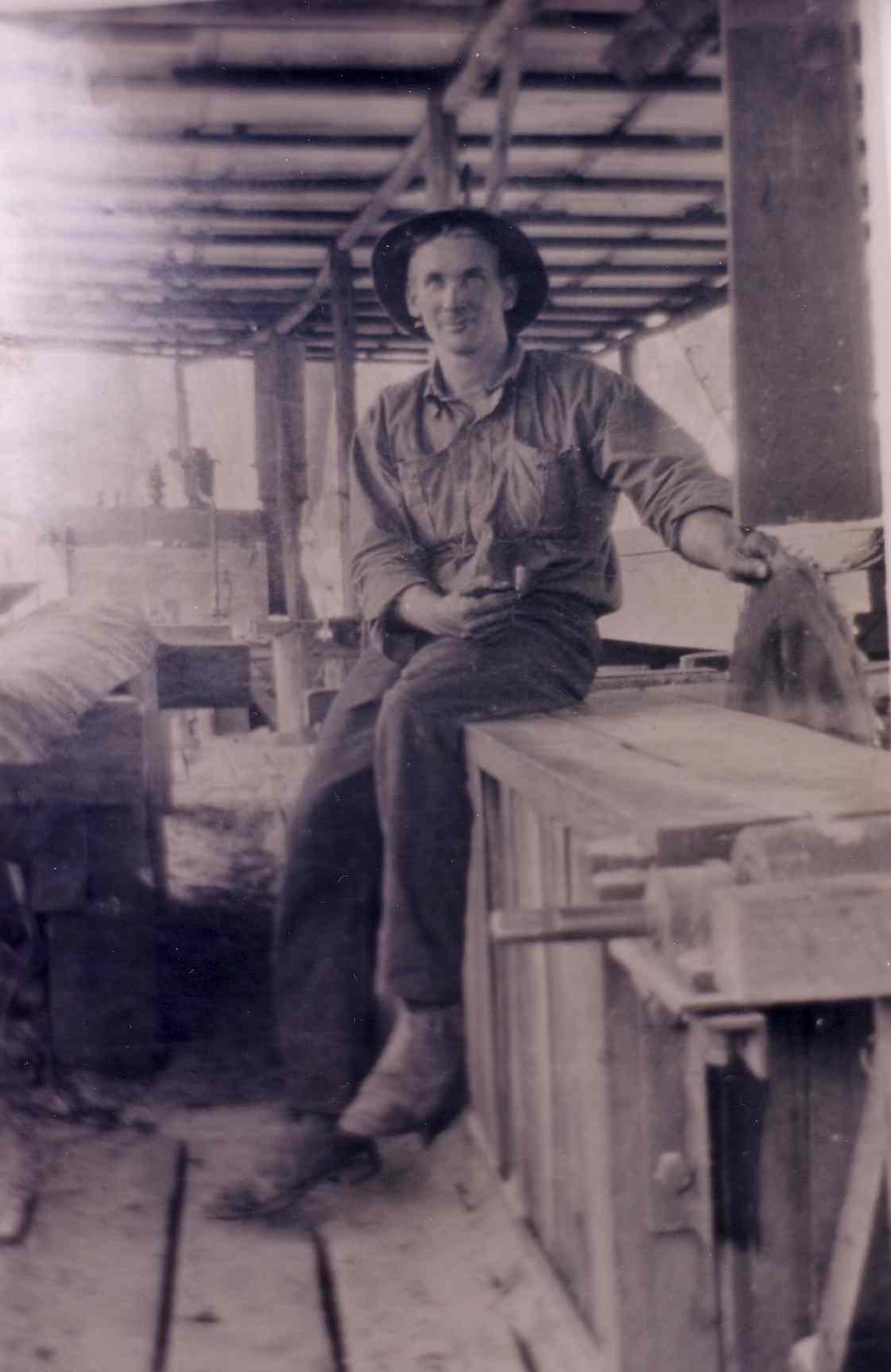
Syd Kirk at the Kirk's sawmill.
But there were other Mt Wilson residents, who were not rich and privileged, who formed strong relationships with Patrick White. Matt Davies had served as Colonel Wynne's batman during the War. His wife Flo had served in a number of wealthy homes in England, such as Blenheim Palace. The young Patrick loved staying with the Davies at Wynstay, writing that it was for him the "real world" and that Mt Wilson was "a paradise of my childhood".
His visits to Mt Wilson became more frequent when his parents purchased Beowang in December 1921.
Significantly, White's attachment to Mt Wilson strengthened deeply when his beloved Nanny, Lizzie Clark, married Sydney Kirk, a saw miller and the eldest of the seven Kirk brothers, all born and bred in Mt Wilson. Syd introduced Patrick to the magic, mystery, beauty and wonder of Mt Wilson. In Flaws in the Glass White writes: "Syd Kirk showed me lyrebirds, the wombat tracks, zircons in the trickle of the creek. He taught me to unravel bush silence".
Until Lizzie Clark's death in 1975, Patrick White and his partner Manoly Lascaris returned regularly to Mt Wilson to visit Lizzie and Syd Kirk, and Matt and Flo Davies, the people whom he loved and admired throughout his life.
Patrick White: A Timeline
- Details
To this day, Patrick White remains Australia's only Nobel Prize winner in literature
1912 Born in London to Australian parents Victor (Dick) White and Ruth Withycombe. Raised in Sydney.
1921 First visit to Mt Wilson and the Wynne cousins. Dick and Ruth purchase Beowang (later Withycombe) for 2000 pounds.
1922 First published works - two letters to the Sydney Sunday Times.
1922-29 Educated at Cranbrook and Tudor House, NSW, and Cheltenham College, England.
1931 Worked on an unpublished novel (Finding Heaven) at Withycombe while waiting to go to Cambridge University.
1932-35 Attended Cambridge University, Kings College. Studied French and German languages and literature. Remained abroad for 13 years after graduation; travelled in Europe and America before the outbreak of war.
1937 Dick White dies.
1938 Withycombe sold to the Church of England for ten shillings.
1939 First novel Happy Valley published; awarded the Australian Literary Society (ALS) Gold Medal (1941).
1940-45 Worked as an intelligence officer in the Royal Air Force - Greece and Egypt.
1941 Publication of The Living and the Dead.
1948 Publication of The Aunt's Story. Returned to Australia and settled on a small farm, Dogwoods, at Castle Hill, Sydney.
1955 Publication of The Tree of Man; awarded ALS Gold Medal (1955).
1957 Publication of Voss; awarded the Miles Franklin Literary Award and, in 1959, the W.H.Smith Literary Award (UK).
1961 Publication of Riders in the Chariot.
1963 Ruth White dies.
1964 Publication of Night on Bald Mountain. Publication of The Burnt Ones; awarded ALS Gold Medal (1965). Moved to Centennial Park, Sydney.
1965 Publication of Four Plays.
1966 Publication of The Solid Mandala.
1969 Suzanne White dies.
1970 Publication of The Vivisector.
1973 Awarded the Nobel Prize for Literature for "his epic and psychological narrative art which has introduced a new continent into literature". Established the Patrick White Literary Award with money from the Prize. Publication of The Eye of the Storm. Named Australian of the Year.
1974 Publication of The Cockatoos.
1975 Awarded the Companion of the Order of Australia.
1976 Returned his Order of Australia in protest at the sacking of the Prime Minister Gough Whitlam in November 1975.
1978 Publication of The Night the Prowler.
1979 Publication of The Twyborn Affair.
1981 Publication of Flaws in the Glass.
1986 Publication of Memoirs of Many in One.
1990 Patrick White dies in Sydney.
2003 Manoly Lascaris, Patrick White's partner for nearly fifty years, dies.
Patrick White contributed generously to a multitude of causes including Aboriginal education, homeless men in Sydney, and the Red Cross. He donated numerous paintings to the Art Gallery of New South Wales.
His literary works have been translated into twenty eight languages.
A Place for Family
- Details

Mt Wilson in the 1920s and 1930s
Even in this remote part of the world, World War I acted as a catalyst for social change. By the end of the War, the original property owners from 1878-1880 had either sold or had passed on. Of those who had inherited land, three at least made the decision to become permanent residents and attempted to extract a living from the rich basalt soil and moist, cool climate. Some residents continued the pattern of arriving in November, and departing the following April. Guest houses became an attractive alternative for visitors as the attractions of Mt Wilson became more widely known.
For the first time, these resident owners, having survived the slaughter of World War 1, married and raised their children in Mt Wilson. One of those children, Helen Warliker (nee Gregson), captures some of the magic of those times in A Mount Wilson Childhood (1990). In the Foreword she writes: "Life was not idyllic but I think we were privileged to have been brought up in this unique environment, not only because of the beauty of its gardens and seemingly endless expanses of bushland which were our playground, but because of the diversity of people who formed the community".
In his eulogy for Jane Smart in St Georges Church, Mt Wilson, on the 17th June 1995, Peter Valder expressed a similar view: "it seems to me we were lucky to grow up in a magical innocent time in what I feel was the district's Golden Age". He continued: "The roads were not sealed, there was no electricity, no television, most of us did not have radios or cars, so community life flourished. I was especially fortunate that as a pre-school child the Wynnes allowed me, along with the Gregsons, to be taken under the wing of their own remarkable tutor Dorothy Moore or Dollie. We all learned to read andwrite, we sang, we played games, we painted, we made pottery (with Fred Mann), we did leatherwork, we wove things and we took part in small plays".
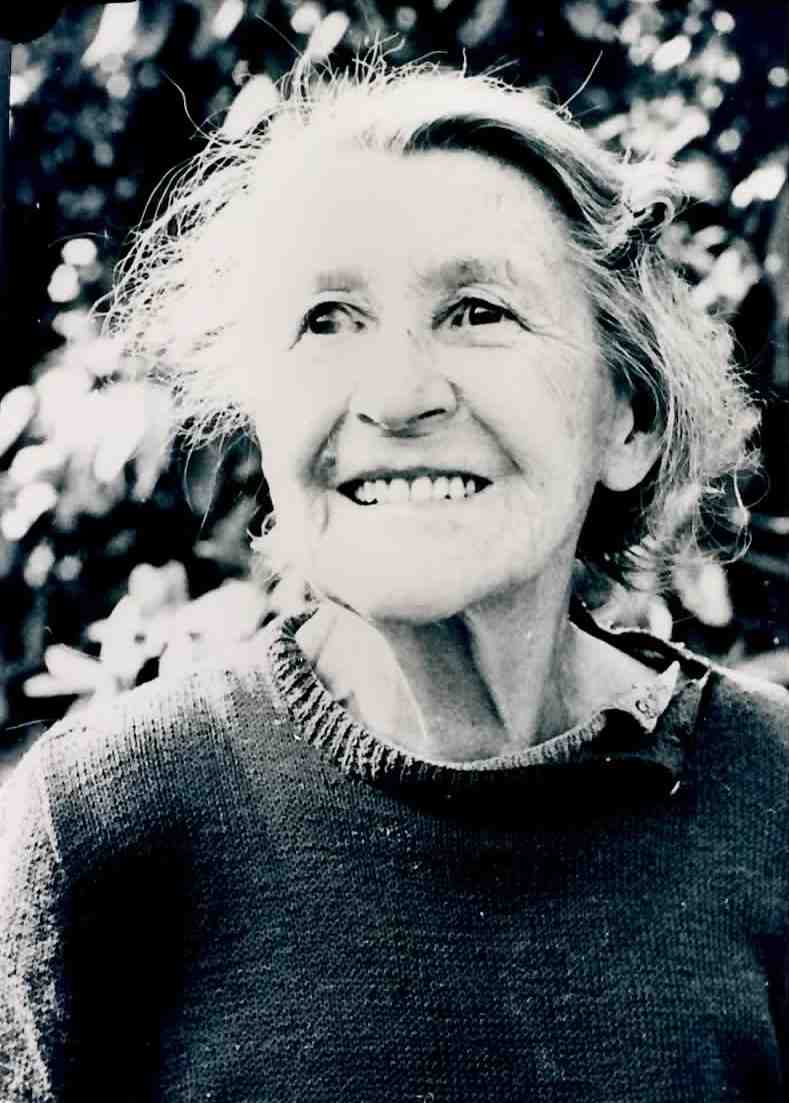
Mt Wilson School had an erratic existence due to fluctuating enrolment numbers. In the 1930s, however, the school opened regularly thereby introducing another stable element to the community along with the Parents and Citizens Association.
Surrounded as Mt Wilson is by bushland, the children of the 20s and 30s had the endless delights of bush picnics often led by Edward Jesse Gregson, Helen's father and a fine amateur botanist. As Helen describes them: "the billy was boiled and some times chops grilled. Then there were the Bogey Holes, a series of dark waterholes overshadowed by rocks - there surely must be a bunyip".
The children also gathered at Windyridge with Miss Helen Gregson, Edward's sister. Here a children's playground was created including the Maypole, the Giant's Stride, monkey bars and a seesaw. Lemon syrup and biscuits were offered as refreshments. Miss Gregson was a great believer in developing a sense of adventure in children.
Another unusual member of the community was Fred Mann who owned Yengo, which he named Stone Lodge. In Cherry Cottage at Stone Lodge he created pottery from the local clays and taught the children skills. On other occasions he generously hosted children's parties. As the children grew there were the joys of riding ponies, racing each other and jumping over logs, and the fun of New Year's Day Sports, initiated by the Country Women's Association.
Meanwhile, fetes and garden parties were a feature of life, especially at Wynstay. Mt Wilson's magnificent gardens were opened to the public to raise funds for projects such as the Village Hall. Suzanne White, Patrick's sister, was a generous contributor to this project.
